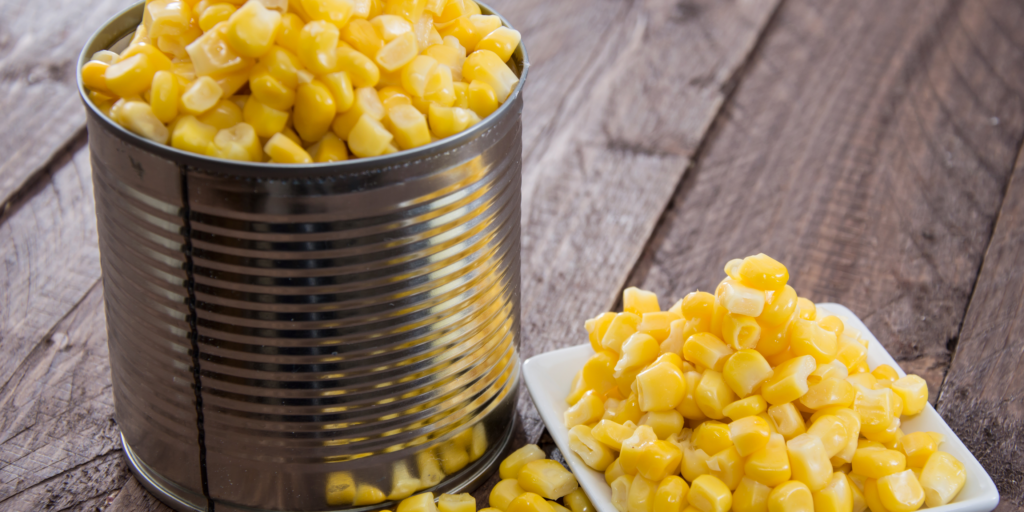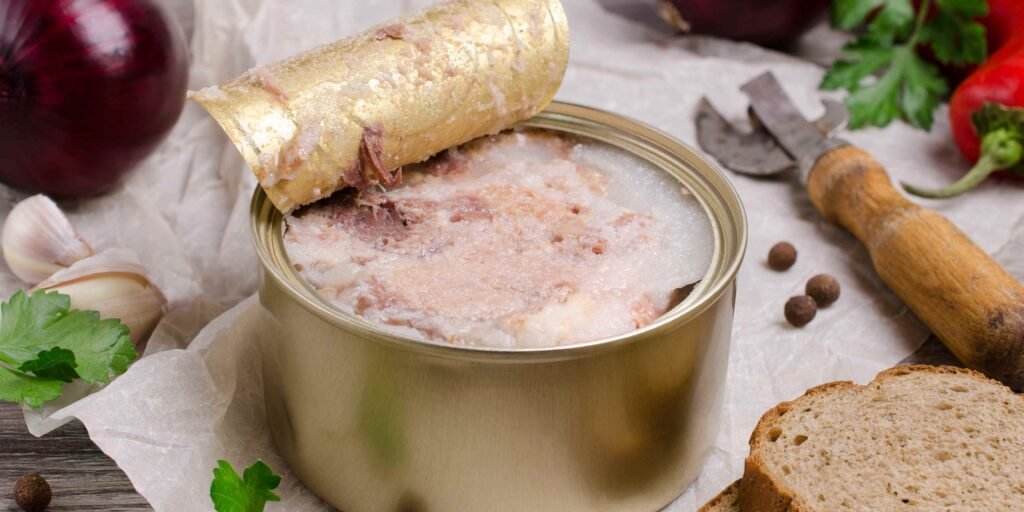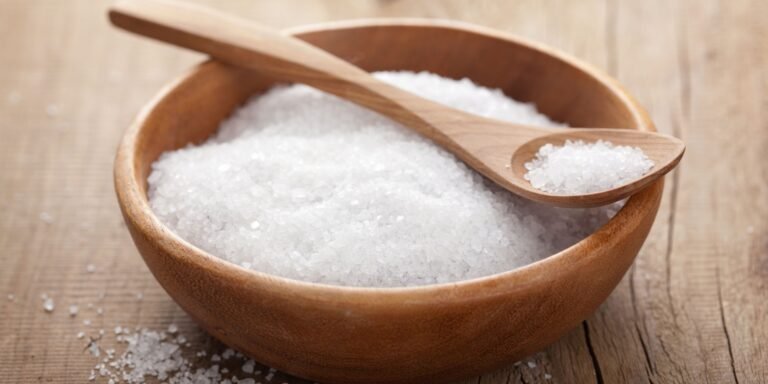11 Essential Canned Foods to Stockpile for Emergencies
This post may contain affiliate links, full disclosure here.
Every home should have a food stockpile for when SHTF such as floods, storms, hurricanes, and other disasters where you’re required to bug in. Canned foods are a great solution to short-term and long-term food issues.
The best-canned foods to buy and store for an emergency situation are those that have all of your nutrition needs covered and have a lengthy shelf life to get you through a disaster when you don’t have access to fresh meat and fresh vegetables. In case of a power outage, canned food goes a longer way than uncooked white rice and you don’t have to hunt down your charcoal grill to get your cooking done.
Fruits, meats, and vegetables are better preserved by canning and/or dehydrating. Home-canned meals are less expensive and healthier than store-bought canned goods, but any canned food makes for great emergency food supplies.
However, if you’re new to prepping and don’t know much about food preservation, or simply want to add more variety to your food stockpile, canned goods are a great alternative because they’re easy to store and have a lengthy shelf life, often lasting decades.
I hope the following items can give you a good idea of what you should store for your family in case of an emergency.
See also: Top 20 Barter Items to Stockpile

Essential Canned Foods To Stockpile For Emergencies
Canned Vegetables and legumes
When it comes to storing emergency supplies, canned veggies are a must-have. These are essential for a balanced diet, and you can get as many as you like.
Furthermore, the liquid inside can be used to make a great soup. It’s critical to stock up on nutritious foods like green beans, black beans, kidney beans, and chickpeas, which are high in protein and calories and will keep you fuller for longer and can store for a long while in your emergency stockpile.
Canned Fruit
Another great option for your emergency food supply is canned fruit. Almost any fruit you can think of comes in a canned option at the grocery store. Canned fruit is great for long-term storage, and is a great option when you cannot get your hands on fresh produce.
Canned fruit is one of the best-canned food options when you cannot get fresh food and fresh vegetables. It contains vitamin c and other essential nutrients that citrus fruits provide.
The canning process can make it so the store-bought fruits are high in sugar but in terms of emergency preparedness that’s actually a great thing. You can also can your own fruits if you want to avoid the added sugar in your survival food.
Canned Meat and seafood
Canned meat has long shelf lives and you can get it at your local grocery store. If you are stocking up on canned meat for your emergency food stockpile, then be sure to get some spam, ham, sausages, chicken, turkey, and tuna. Tuna will likely be the least expensive canned meat, but it’s good to have a variety in case of natural disasters.
Canned Soup and Stew
When getting soup components is difficult, canned soups come in handy. And there are occasions when you have the ingredients but not the time to prepare the soup. That’s when you go for a can of soup that simply needs to be warmed up.
I like to add canned stew to my three-day supply emergency food stockpile. These high-protein foods meet many of the nutritional needs one may have during a survival situation.
I would add that dry mixes for soup are also a good idea to add to your non-perishable food items list, but the canned versions are going to be easier to eat on the go. You can also can your own homemade soup as another viable option.
Ghee and butter
Butter is a terrific component to have in your kitchen, whether you want to spread it on bread, flavor it, or use it in other cooking methods. Even if you’re in a pinch, you can rely on canned butter. Butter, like shelf-stable milk, is another one of those shelf-stable dry goods that have nutritional needs as well as the special needs of cooking, so it’s one of those essential items in survival kits.
Nut Butters
Nut butters are one of the best foods to add to your emergency food preparations. Nut butter not only adds exquisite flavors to our life but also provides a wealth of nutrients and it tastes great at room temperature too.
Peanut butter also goes well with whole grains like crackers and you don’t need a can opener to eat it.
Canned Milk from animals
Milk provides a slew of health advantages. It’s one of the best sources of protein and minerals, not to mention one of the easiest to digest. In the event of an emergency, you can use any type of milk you want.
You can also stock up on coconut milk as another great choice for your emergency food storage shelf.
Canned Cheese
It’s always a good idea to get canned dairy products as another good option to get enough food and fatty acids into your body in an emergency.
Cheese is not only healthy, but it’s also delicious in dishes like the classic mac and cheese. However, canned cheese has a negative reputation due to claims that it contains no natural cheese and is therefore unhealthy.
Tomatoes
Tomatoes are a nutrient-dense food that may be used in a variety of ways. Make a sandwich with them, boil them, or stew them; you’ll reap the nutritional benefits of better skin, heart, and overall wellness. Furthermore, because of its plentiful lycopene, it is one of the most important components of an anti-cancer diet.
Canned Sauces
Is your food stale? No problem, simply smother it in the sauce! Canned sauces may be the best flavor enhancers you can rely on in an emergency. I like to have tomato sauce as well as alfredo sauces in my storage areas.
Canned Chilli
Canned chili is another one on the list of non-perishable foods if you want a ready-to-eat dinner right out of the can. Canned chili is available in a wide range of flavors and ingredients, and it can also be used as a side dish with pasta and brown rice. It really is one of those staple foods that the average person has on hand all the time anyway.
Most significantly, chili is a high-calorie, high-fiber, and high-protein meal which makes it a great item for long-term emergencies.
You can also get dry beans for emergencies however dry foods are harder to prepare if you’re on the go so it’s a good idea to have the canned options as well. Make sure to store your dry foods in airtight containers as it is one of the most important things to do when storing food long term.
Pie Filling
You can also stock up on canned pie filling if canned applesauce isn’t quite enough to satisfy your sweet need. Even if you don’t have all of the components for a pie, merely heating the pie filling and eating it on its own can be a delightful treat.
Although pie filling does not have the nutritional needs of most of the foods in your pantry, it is heavy in calories and can provide a guilty pleasure at a time when such pleasures are scarce.

How to Get the Most Out of Your Canned Foods
The first step is to figure out the right foods to buy. The next stage is to figure out how to keep your food appropriately and what your primary means of emergency food storage are. The majority of canned goods have a long shelf life. However, by storing them in a cool, dark spot, you can extend their shelf life even longer.
Even if you store your cans in the best possible conditions, keep an eye out for symptoms of deterioration. When canned foods rot, the consequences are not to be trifled with.
Botulism, one of the most common causes of canned food deterioration, can be fatal. To summarise, one lousy can will quickly derail your entire survival strategy, resulting in a few terrible days at best and death at worst which you wouldn’t wish on your household members.
Get into the practice of rotating your food storage to avoid deterioration. An easy way to start canned food rotation is to see if a can has a five-year shelf life and you’ve been storing it for four years, take it out and consume it immediately before replacing it with a new one. That way, your stash will always be fresh when calamity strikes.
Another thing to think about is how you label your canned goods when you plan food supplies. While the canned food you buy will almost certainly be properly labeled on the day you buy it, the food within may possibly outlast the label on the outside.
Labels fade or peel off with time, making it hard can tell what’s inside that blank aluminum. As a backup, tape a piece of masking tape to the top of each can and write down what’s inside with a permanent marker on the tape, as well as the date.
Finally, make sure you have enough can openers in your arsenal. Because can openers can break or stop working at any time, having a large supply on hand is a good idea. While it is feasible to open a can with a knife, it is not as simple as it appears in the movies.
It’s always a good idea to have a good variety of foods and not just navy beans and protein bars. If you are trying to survive for long periods of time, you’ll need a great source of protein such as chicken noodle soup and canned meaty products in your emergency kits.

Keeping Canned Foods on Hand in Case of Emergency
You should also know where to store the products and for how long they should be kept. You should purchase canned items with a longer shelf life and store them in a dark, cold location.
Check the cans at least once every six months to be sure they haven’t expired. We all have a tendency to forget when we bought something, so double-checking could save you money when the time comes.
Pay attention to any indicators of spoilage, since this is extremely vital advice. If one can become spoiled, the other may get contaminated as well, posing a serious health risk. Given this, it is preferable to consume canned items prior to their expiration date.
Labeling your cans would be a huge help. Some will last for a long time, although the label or markings on the can may fade.
You won’t chance opening something you don’t want if you label them yourself and check your cans to make sure the name and expiration dates are still readable. A few extra minutes spent on minutiae can sometimes make a significant impact afterward.
You should also have at least one can opener, but two would be even better. If you don’t have this opener, a knife will suffice. This is a more messy and dangerous method of opening a can, so don’t rely on it. Make certain that your children do not attempt to open cans on their own, since this can be extremely dangerous.

Tips to Help You Build an Emergency Food Supply
With all of the wonderful canned foods stated above, you may become overwhelmed by the range of options and question what to buy to maintain a healthy diet in a crisis. But don’t get too worked up over it. Here are some ideas to help you store the best canned food selections efficiently, in addition to the items to buy.
Begin with a strategy
First and foremost, do not be alarmed. Relax and make a plan. To build an efficient food saving plan, you must ask yourself the following questions:
- How long are you planning on storing food?
- For whom are you putting the food aside? Do they have any allergies that you should be aware of?
- What are some of the most basic meals that you and your family can eat?
- What are your favorite long-term treats?
The first important question is how long you expect the emergency will persist; knowing this gives you a head start on what to buy and what budget you can work with.
The Department of Homeland Security recommends that you stockpile supplies that will last at least 72 hours. This will, however, depend on the nature of your emergency, as natural disasters can last only a few days while a pandemic can last much longer.
Because you can always consume canned food after a long period of time, it’s preferable to go overboard with the duration based on your budget. You can stockpile two months’ worth of goods; even if you only consume half of the stockpile during the emergency, the canned food can be used for months, if not years, if properly stored.
Prioritize the fundamentals
Always, always, always, always, always, always, always, always, always, always Don’t stock up on snacks and forget about the major elements for your regular meals. It will be a waste of time and money in these uncertain times.
Consider this: what are the most common foods from which you can receive the most essential nutrients? Sort the highest in importance after you’ve written down your responses, and continue doing so even during snacks. Remember to pack filtered water, as safe drinking water may become scarce and food safety is important.
Focus on Nutritious and Delicious Foods
During an emergency, you may dump any food you can get your hands on into the pantry. However, this is unwise because you may become unwell as a result of all the trash you consume.
The best ways to focus on nutritious food are to focus your buying on the healthiest foods available. You may receive nutrition from a variety of delectable foods if you use the correct canned items.
Even in times of uncertainty, make sure you invest in your health and make good choices. When a disaster comes, do your best to eat healthful foods and stay as healthy as possible.
Purchase in Large Quantities
Bulk purchases are usually less expensive. Because you may require a large amount of food during an emergency, buy as much as you can in one go, especially meat products.
When purchasing canned items, opt for larger, more inexpensive packs rather than single cans as a great way to save some money. This way, even if the emergency lasts longer than expected, you’ll feel confident that you’ll be able to get through it.
Take some seeds with you and think about starting an indoor garden
During situations such as pandemics, you may be forced to stay indoors for an extended period of time. Even if you can get to the limited supplies accessible at grocery stores, you risk being exposed, and you may not be able to buy the goods you want. The best thing is to get your hands on fresh produce is to start an indoor garden.
You may produce food hydroponically with the help of ready-made kits from Amazon. This would not only allow you to grow your own food wherever you are, but it would also give you with a consistent supply of fresh fruits and vegetables grown under your supervision.
Even better, indoor gardening keeps you occupied during a crisis, which can be dreary when you’re sitting around doing nothing. Indoor gardening can provide you with ingredients to use with canned food, such as:
- Microgreens
- Sprouts
- Kales
- Spinach
- Spices like basil, cilantro, mints, and celery among others
- Lettuce
- Cucumber
- Spring onions

Bottom Line Canned Foods to Stock for Emergency
Canned foods may not be our top priority, and they may not even be considered. However, if we think about it, they are our best option in the event of an emergency.
Living solely on canned goods isn’t ideal, and it’s also bad for your health (due to all the sodium). It is, however, something you could do on a temporary basis if necessary, and it isn’t nearly as unpleasant as it may appear. While you should still complement canned food with fresh food whenever possible, keeping a stockpile of canned food on hand might help you avoid being hungry.








